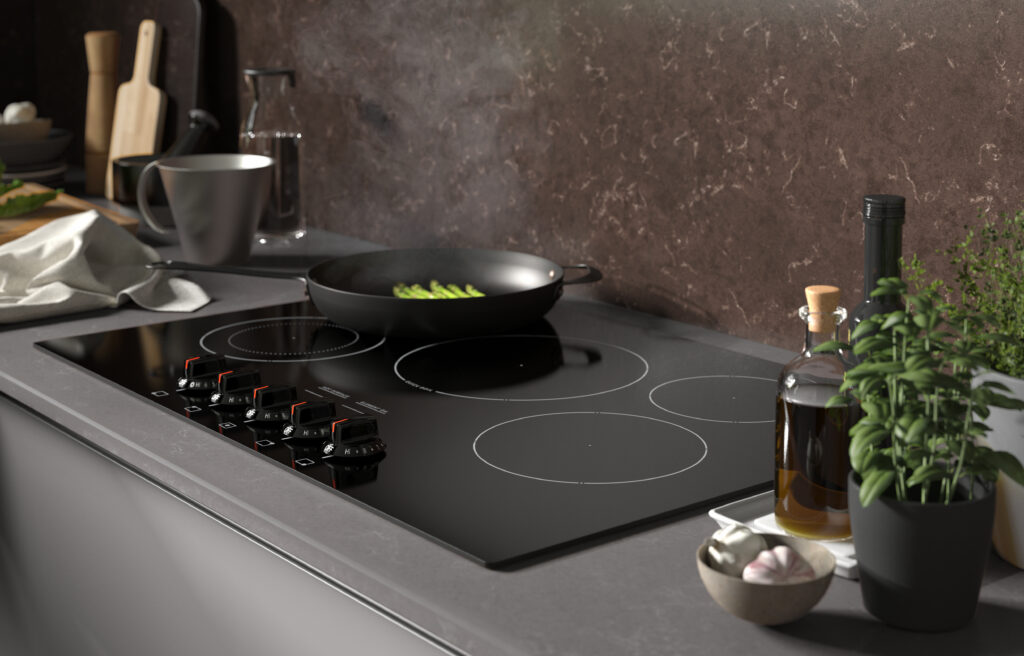
Induction cooking is gaining popularity for its speed and efficiency, but transitioning from traditional gas or electric stoves can be daunting. Experts in the culinary field have shared their top seven tips to help home cooks successfully navigate the world of induction cooking.
Choose the Right Cookware
A crucial first step in induction cooking is ensuring that your cookware is compatible with this technology. Only specific materials can work effectively, primarily magnetic stainless steel or cast iron. Chris Demaillet, owner of Montclair Chef, emphasizes the importance of this compatibility. He warns that many consumers may not realize this when purchasing an induction stove online.
To easily check if your pots and pans are suitable, Demaillet suggests using a magnet. If the magnet adheres to the bottom of the cookware, it will work on an induction cooktop.
Understand Coil Size
While gas and electric stoves visibly display coil sizes, the magnetic coils in induction cooktops are typically hidden beneath the glass surface. Tung Vu, a chef-instructor at the Institute of Culinary Education in New York, points out that consumers should scrutinize product specifications to determine the coil size.
He warns that smaller magnetic coils may not adequately heat larger cookware. For optimal results, ensure that the diameter of the induction cooktop’s magnet matches or exceeds the size of the largest pan you plan to use, ideally around eight inches.
Utilize Quick Heating
Induction cooktops are renowned for their rapid heating capabilities. Demaillet notes that induction can heat significantly faster than gas or traditional electric stoves, making it ideal for searing proteins. However, he cautions that this speed can lead to burnt food if not managed correctly.
Both Demaillet and Vu recommend preheating pans gradually to avoid uneven heating. Vu explains that starting with low heat allows for a more consistent temperature across the pan, resulting in better cooking outcomes. Mike Williams, Vice President of Sales and Marketing at Kenyon, adds that induction cooktops can boil water in one-third of the time compared to radiant electric models.
Use the Boost Function Wisely
Many induction cooktops feature a boost function, which provides a surge of power to quickly heat a burner. While this can be beneficial for bringing water to a boil or searing meat, Williams advises using this feature sparingly.
He explains that prolonged use or using it with empty cookware can damage both the cooktop and the cookware. The boost function should be treated as a temporary setting to maximize efficiency without risking damage.
Avoid Dragging Cookware
Unlike gas or electric cooktops, where dragging pans is common, Vu advises against this on induction surfaces. While the glass cooktop is tempered for durability, it can still be scratched or damaged. He recommends lifting pans completely off the surface during cooking movements to prevent wear.
Clean Spills Promptly
Maintaining the cleanliness of your induction cooktop is vital. Williams suggests addressing spills immediately to avoid potential damage. He highlights that sugary substances can etch the surface, while burned-on food can lead to stains or discoloration.
It is best to wipe down the cooktop as soon as it has cooled sufficiently to ensure its longevity and efficiency. Demaillet concurs, stating that leftover grease can reduce the cooktop’s performance.
Don’t Heat Empty Cookware
Starting with an empty pan on high heat is a common practice in traditional cooking but should be avoided with induction cooktops. Williams warns that this can easily damage the cookware due to the rapid heating capabilities of induction technology. He recommends starting on low heat and gradually increasing it once food is added.
As cooking trends evolve, induction cooking is proving to be a viable option for modern kitchens. With the right techniques and equipment, home cooks can master this innovative method, enjoying its benefits while avoiding common pitfalls.






